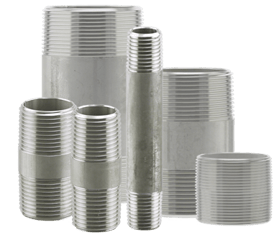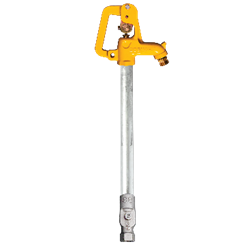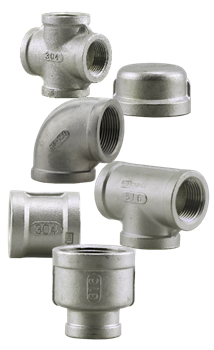Are Boshart’s stainless steel pipe nipples and fittings pickled and passivated?

Yes! The following Boshart part series are pickled and passivated:
- SS304N: Schedule 40 304 Stainless Steel Pipe Nipples
(https://boshart.com/product/1-8-6/) - SS316N: Schedule 40 316 Stainless Steel Pipe Nipples
(https://boshart.com/product/1-8-7/)
- 13YH-SS10T: 304 Stainless Steel Yard Hydrant Standpipe
(https://boshart.com/product/304-stainless-steel-304_stainless_steel-no-lead/) - SSH304X: Heavy 304 Stainless Steel Pipe Fittings
 (https://boshart.com/productcategory/master/fittings/pipe_fittings/stainless_steel_pipe_fittingsnipples_master_category/heavy304_stainlesssteelfittings_pipefittings/)
(https://boshart.com/productcategory/master/fittings/pipe_fittings/stainless_steel_pipe_fittingsnipples_master_category/heavy304_stainlesssteelfittings_pipefittings/) - SSH316X: Heavy 316 Stainless Steel Pipe Fittings
(https://boshart.com/productcategory/master/fittings/pipe_fittings/stainless_steel_pipe_fittingsnipples_master_category/heavy316_stainlesssteelfittings_pipefittings/) - SS304X: Light 304 Stainless Steel Pipe Fittings
(https://boshart.com/productcategory/master/fittings/pipe_fittings/stainless_steel_pipe_fittingsnipples_master_category/light304_stainlesssteelfittings_pipefittings/) - SS316X: Light 316 Stainless Steel Pipe Fittings
(https://boshart.com/productcategory/master/fittings/pipe_fittings/stainless_steel_pipe_fittingsnipples_master_category/light316_stainlesssteelfittings_pipefittings/)
What is pickling and passivation?
According to the ASSDA, “pickling and passivation are chemical (acid) treatments applied to the surface of stainless steel to remove contaminants and assist in the formation of a continuous chromium-oxide, passive film.”
When steel is heat treated, an oxide layer forms and the chromium layer underneath (on the surface of the steel), is depleted. The chromium content which contributes to corrosion resistance, is lowered in the depleted layer. To restore the corrosion resistance, the depleted layer is removed and the fully alloyed stainless steel surface is exposed. Pickling is the chemical means by which the chromium depleted layer is removed, and corrosion resistance is restored.
Passivation is a chemical means to remove contaminants, like free iron, from the surface of the metal and promote the formation of a passive film on a freshly created surface (from grinding, machining, etc.). The passive film is less likely to corrode, increasing the corrosion resistance of the part.
https://www.assda.asn.au/stainless-steel/surface-finishes/pickling-and-passivation
Additional Resources
https://support.boshart.com/are-304ss-and-316ss-threaded-fittings-and-pipe-nipples-food-grade
https://support.boshart.com/making-a-leak-proof-stainless-steel-threaded-connection
